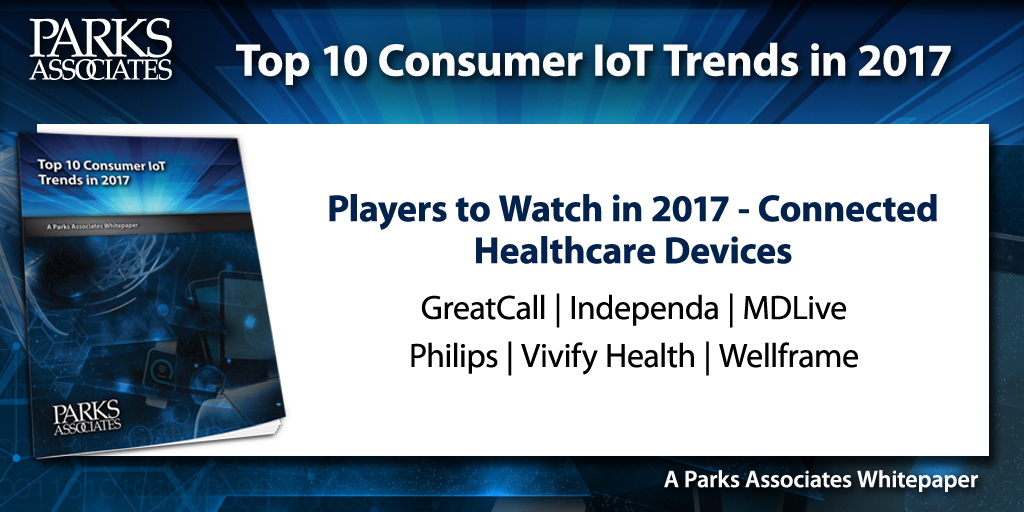We recently released a complimentary whitepaper examining the top trends in the connected home, health, and mobile industries. Top 10 Consumer IoT Trends in 2017, which features insight from Parks Associates’ analyst team, examines key topics driving growth and monetization of the IoT.
Consumerization of healthcare services and devices drives integration with smart home ecosystems and new business models.
Connected healthcare is taking a more prominent role in the smart home as the industry explores new use cases to drive consumer interest and forge revenue-generating partnerships.
Parks Associates research shows that 35% of U.S. broadband households own and use at least one connected health or wellness device, and 12% own more than one. Additionally, smartphone owners use numerous health-based apps both on their own and as required or recommended by their employer or health insurer.
This trend has galvanized interest from a variety of players, including health insurers, device manufacturers, service providers, and app developers for the potential to improve consumer care experience and generate new revenues from innovative services.
Parks Associates notes there are multiple connected healthcare business models being tested now, which will continue through 2017. The trend will offer multiple opportunities for companies to expand healthcare service and also take the lead in protecting consumers and their data.

Additional digital health market leaders can be found in Parks Associates’ Connected Health Tracker report Digital Disruptions: Innovator Leaderboard and Winning Strategies.
Download the new whitepaper for a full explanation of the Top 10 Consumer IoT Trends in 2017:
- Voice control is vying to become the primary user interface for the smart home and connected lifestyle.
- The smartphone market plateaus, and mobile carriers experiment to retain subscribers, which will threaten fixed broadband services.
- CE manufacturers focus on new product categories and ecosystem strategies to compensate for stagnation in a mature market.
- Virtual and augmented reality gain a foothold in niche operations and greater awareness among early adopters, creating opportunities for social VR experiences.
- The differences between on-demand and live viewing continue to blur as consumers embrace a variety of OTT video services.
- Consumers increasingly expect connectivity in their cars, but pricing, safety, and data privacy concerns inhibit market growth.
- To cross the chasm, the smart home industry will continue to develop new use cases for security, peace of mind, and energy management.
- Insurers are exploring new business opportunities in smart home products and services and will continue to launch trials and new partnerships.
- Wearables and smart watches are expanding as healthcare tools and will be integrated with other IoT applications.
- Consumerization of healthcare services and devices drives integration with smart home ecosystems and new business models.
Further Reading:


